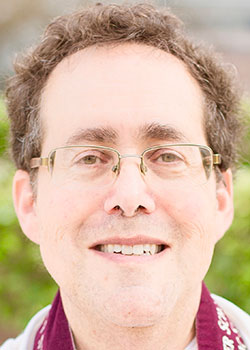The Torah portions of Tazri’a and Metzora speak at great length of the irruption of skin disease and how the Kohen was used to re-establish ritual purity after the medical issues had been resolved. In a sense, then, the thrust of this section of the Torah is to restore peace of mind and spiritual wholeness after the disruption and terror of dis-ease. The opening lines of the joint portion, speaks of a different form of unusual discharge, that of birth: “When a woman at childbirth bears a male…”
While rabbinic Judaism has volumes to say about tumah (ritual impurity) and tohorah (ritual purity), the rabbis of the ancient Midrash Va-Yikra Rabbah use this reference to childbirth to consider what a miracle birth really is.
First, the rabbis consider the medical marvel that pregnancy entails: “If a person holds a bag of money with the opening downward, don’t the coins scatter? But the embryo has its residence in the mother’s womb, but the Holy Blessing One guards it that it does not fall out and die.” The miracle of the body’s ability to retain the fetus within is heightened by the fact that human beings stand erect and walk on two feet: “It is the way of a beast to walk with its body in a horizontal position, and its embryo is in its womb in the form of a bag, whereas a woman walks erect while the embryo is in her womb, and the Holy Blessing One guards it that it should not fall out.”
How marvelous that, as a rule, women have the capacity to carry the fetus to term, and that the human body is capable of such wondrous feats!
Consider another marvel of pregnancy: “If a person were to stay in hot water for one hour, wouldn’t that be fatal? Now a woman’s womb is at boiling temperature, and the embryo is in the womb, and the Holy Blessing one takes care of it.”
And one final miracle of pregnancy: “all the nine months that a woman does not see [menstrual] blood, she really should do so; but what does the Holy Blessing One do? God directs the blood upward to her breasts and turns it into milk, so that the fetus may come forth and have food.”
These rabbinic observations may make us smile at their simplicity and their lack of anatomical sophistication. But that smug smirk really misses the remarkable profundity of what the Sages are trying to note: We take for granted the complex processes that insemination, pregnancy, and birth require. Yet the impediments facing an egg and a sperm combining, flourishing, and producing a healthy baby are so daunting that the end product is no less miraculous in our eyes than it was in the view of our ancestors. Think of how striking that the human baby (and the mother) fight gravity for the duration of the pregnancy, and generally do so successfully. Reflect on the fetus’ complete reliance on its mother for temperature control, nutrition, and other necessities, and the wondrous nature of birth is overwhelming. Or, consider that the rabbis didn’t have dissections and autopsies, and didn’t know why the blood stopped flowing, why the milk started production. But they were sound enough empiricists to note that the two events happened at approximately the same time, linked to the same cause. It is a miracle that most mothers produce their baby’s first food.
All of this wonder is limited to the physical and biological side of pregnancy and birth, a side that certainly justifies our sense of awe and marvel. But the rabbis were also physicians of the soul, and they also paused to note the miracle that baby’s are born with complete personalities, ready to unfold and express themselves to their parents and the world. That already-formed character is a sign of God’s already having established a unique relationship with each new baby, so that their place in the world is irreplaceable and precious from the moment they emerge:
“It is natural that, if a man is confined to prison with no one giving him attention, and someone comes and kindles a light for him there, the former should feel gratitude towards the latter. So, too is it with the Holy Blessing One. When the embryo is in its mother’s womb, God causes a light to shine for it there. Is this not a matter for praise?”
It is indeed.
Shabbat Shalom.

